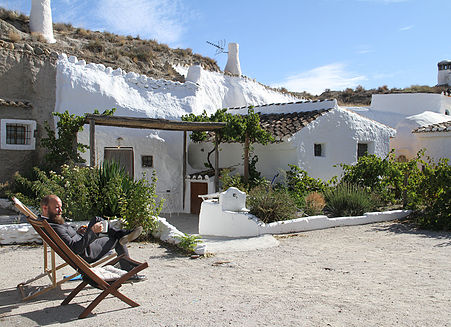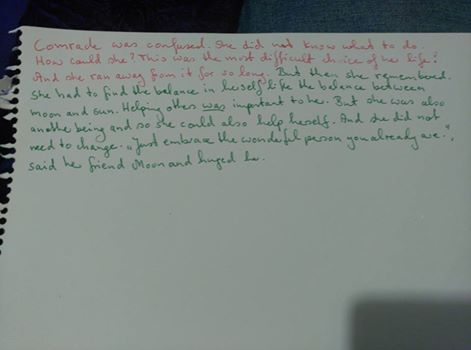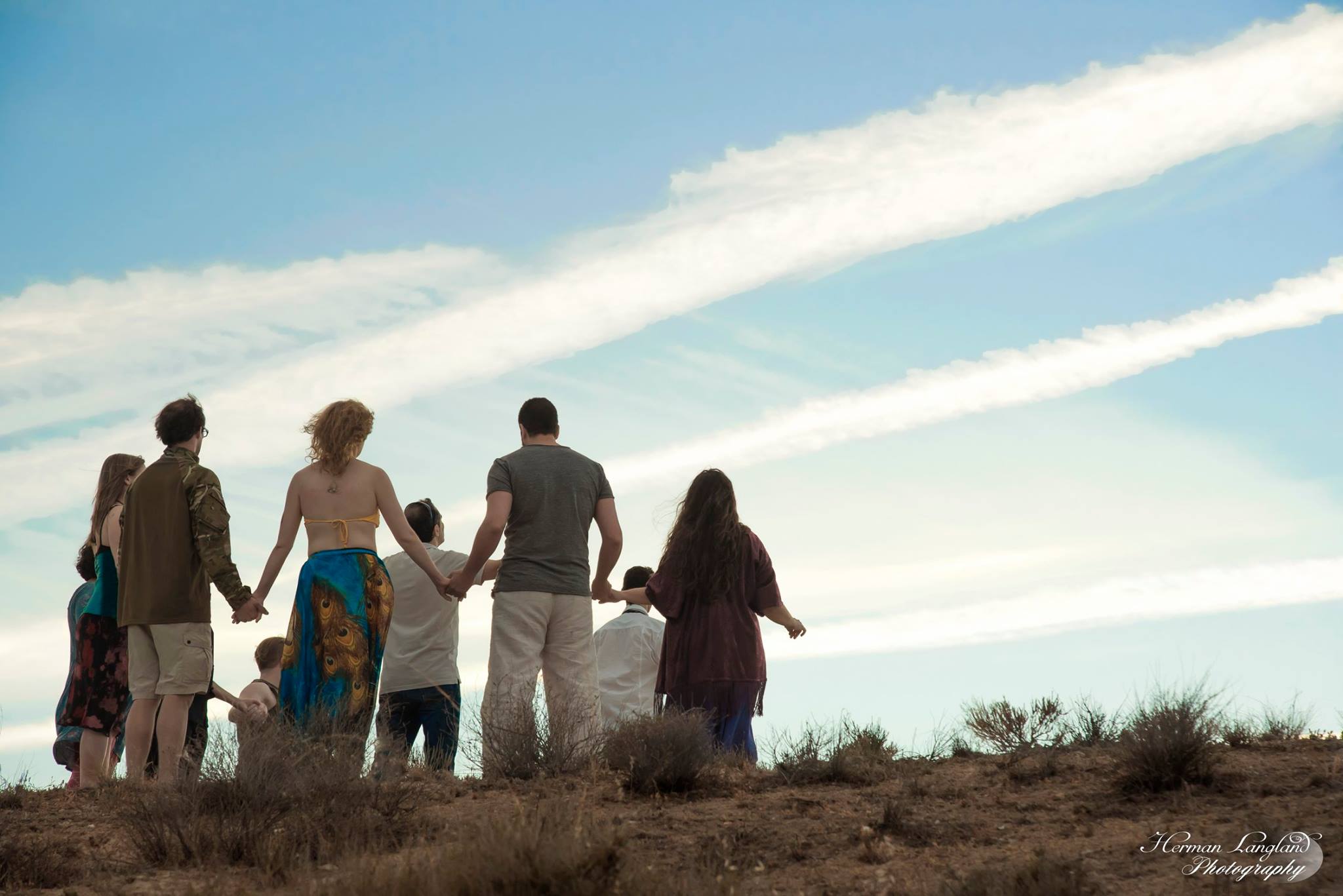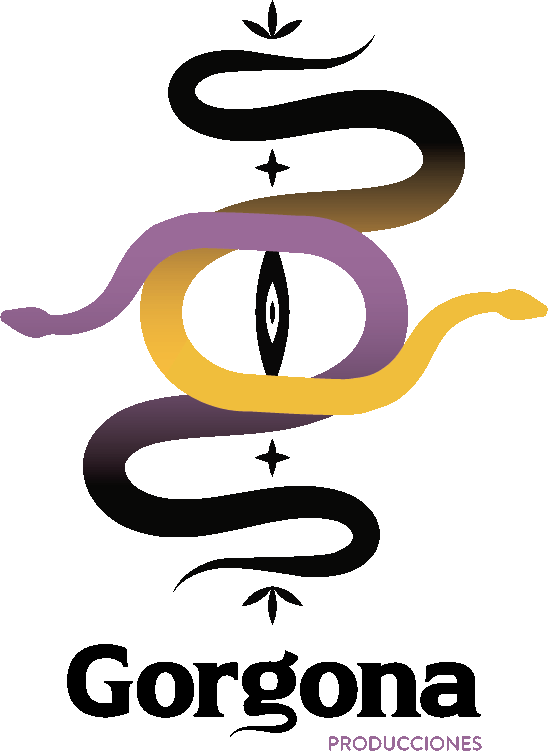The last weekend of May I played the second run of the Spanish Larp “La Sirena Varada” (The Strainded Mermaid), based in the play of Alejandro Casona. It was created by Somnia and played completely in English.
May 26th to 29th 2016
Al Jatib caves (Baza, Granada, Spain)
International larp – English language
22 positions
If you want to read more about the larp you can go to their webpage and to the design document.
The location
The location was the Al Jatib caves (Baza, Granada, Spain). I have been there for the Entrereves, the Spanish larp conference a couple of years ago, so the surpise wasn’t as big as for the others. Even though, it is one of the most amazing locations I’ve played in (including some blockbuster events as Fairweather Manor). Of course, it is not as big, or as rich, but it was the ideal place for this kind of larp
One of the things that surprised me more about the propaganda of the larp was that Somnia didn’t make a big point about the location. Of course, they say it was in the caves, and they provided a link to the hotel web page, but it was nearly all. And it was a luxury accommodation.
The Republic of the Free, the community who we were playing, was a rich one. They have just retired to some place in Spain to create art together, to be themselves. And you can truly do that in the caves. The rooms were excellent, the bathrooms amazing. We have a beautiful swimming pool around which we created a lot of amazing art pieces. And, the main point of the location: the hammam. So, it is a perfect 360º place.
Even if you don’t like this kind of games, the location is fantastic if you want to spend a couple of days relaxing near one of the most beautiful cities in the world, Granada.

First run photo by Esperanza Montero.
The workshops
The workshops were well explained in the design document. They were 15 of them, occupying all the first evening (from 4-12 pm). During the 5-6 first workshops, you are yourself during the explanation of the larp and its mechanics. Even though, you begin to work in the character personality and its relation with the others. After the 7th workshop, you had built your personality and you are inside character most of the time, even you continue working in some aspects of the characters. After that, the breaks are in character (including the dinner break).
It was a curious approach to the pre-larp workshops. Usually, you are out of your character until they finished. We could work in there the different methatecniques (I will explain them latter), built new realtions between the community…
I don’t want to explain them one by one, as you can read them in the design guide. Although, I want to focus in those who were best or worst.
The character creation was done by the technique of the personality triangles. It worked well for me as I could fix the main points of the physique and the mind of Comrade, the character I was playing.
For creating new relations, they used some different workshops. I really enjoyed playing the tandem, as I could create one of the main relations for my character. I also liked the ghost workshop as it really helped to get the mechanique of that point (when your character dies, its memory remains there and people can interact with it). The flashback exercise didn’t work as well as the others, at least for me. It was play in thirds. Other player directed the scenes for the other two, and we changed after. As the director didn’t really knows your character personality, it was difficult to do it.
The most difficult part of the larp was the “fluid time”. We played a full year of the community in only one weekend, so the times flies quickly. When somebody left a conversation and comes back, time has passed in a significant way (for example, two weeks). The workshop tried to help with that but it was done fast as we had run off time. I think this point should improve for the next run (if there is) so players could use the technique more easily.
After the workshops, the larp began with a party.
The methatecniques
One of the things that I loved more of the larp was that all –or nearly all- the methatecniques were diagetic in the game. For me, as I came from the Spanish larp tradition in which we don’t use lot of them, was easier for remaining in my character all the larp.
Ars Marte
Ars Marte was the technique used by the community for resolving their violent issues. Fighting was a thing for the grey people, the outsiders. We had a workshop for learning it (people came from different countries and some of us had never used it before). Personally, I didn’t like it. Maybe because it feels extrange if you aren’t good doing it, maybe because it was my first time or because I’m not a physical player. I don’t know. By the way, nearly anybody used it. We prefere to solve the problems in a less physically.
Ars Amandi
They didn’t use Ars Amandi but they were inspired by it to create a way to approaching each other. They use the code “green”, “yellow” and “red” for indicating if you can increase the level of the relation or not. They encourage us to put it inside a sentence for being less intrusive with the game, but I’m not sure it worked well. Sometimes it was confusing.
Even though, making a workshop and knowing that we have a security code for it, made us feel comfortable with personal intercourse. If fact, without really using it, I had some of the best solved sexual relations I’ve ever had in a larp. They wasn’t sex for sex, they meant something to the character and they truly created a link between the couple.
Times flow
As I already explained in the workshop, the time flows in a non-realistic way. I found the idea very potent. It improves the larp. However, the workshop related to this has to be improved so the awkward situations could be avoided in a better way.
The Shadow caves
I truly love that technique. The Shadow cave was an in-game space where you could go and take a drug that make you have visions. Before going, you should ask somebody to go with you and guide you inside your hallucinations. Your character could share its concerns with the others so they can help him/her. The other character could chose if they are going to help or maybe do something bad to you. Once you take the drugs, everything that the others (that puts on a mask for non-being themselves) said is real for you. Therefore, as the other character, you could use the technique to implant new memories, help with traumas…
I could use the Shadow caves twice during the larp. For the nature of my character (I was an anchor), I didn’t take the drugs but I wanted to help the others with their experiences. It was an amazing experience.
The other caves
In the Other Caves, the truly nature of your character emerge. So, if you go with somebody and you secretly hates him/her, you should act as a hater inside the cave. It was very useful to deep into the real emotions of your character and his/her relations. Inside the cave, you cannot talk and you should act in a primary way (you can make primitive sounds).
I really wanted to test it but I hadn’t the time for going there. Even though, other character that used them had a very good feedback about the experience.
The waters divine
The Waters Divine was the name for the Hammam. We could use the hammam for four hours on Friday and Saturday afternoon. When you go to the Waters Divine, they have to change you in one or other way. Inside, the characters meditate together, help to improve the other’s experience… Some of the most potent feelings of the larp where inside it.
The archetypes and the character sheets
In La Sirena Varada, the character sheets were pre-done, but you had huge liberty to adaptate your character following the advice of your organizator. They use some archetypes based on the theatre play to help the equilibrium of the game design. I don’t want to say a lot about them but you can have the explanation here (http://somnia-larp.wix.com/lasirenavarada#!tools/c11rf).
The development
In La Sirena Varada, you should go into the madness, embracing it. And it was like that. I don’t want to explain a lot about my character or my personal experience and I really recommend to live it yourself. The development of the larp was quite sandboxy so it’s a very different experience each time you play it (in our run, there were two players that were repeating it).
Generally, it worked so well. However, I must point a little thing. The first day should be more relaxing, art-centered, and beginning to embrace the madness. The second day, the madness becomes the central part and the characters began to realise that the utopia maybe it’s not an utopia anymore. We arrived easily to that point but I think that the organizer’s characters were reinforcing that point too much, so they nearly killed the artistic expression and the joy of the madness. I think I would have liked a final with more excentric madness and not a depressing one. However, I had a beautiful end and I liked the experience a lot.
The arts
For me, arts were the best part of the Larp. Inside La Sirena Varada, you can find a secure environment to let your artistic abilities go. People created amazing poetries, shared their favourite songs with the sound of the guitar, danced, photos, write stories…
I can only congratulate all the participants for their amazing performances and for letting me sharing mi poor bellydance skills. I was so comfortable with it and I could create a piece of dancing out of nothing (and it was, maybe, the best piece I’ve ever danced).

Amazing story that Moon wrote (Mary Borges) to Comrade (my character).
Conclusion
“La Sirena Varada” is not a larp for all publics. And it doesn’t intend to be. Moreover, that is one of the main points of larps as these one. They are created for the adult public, to let you explore new facades of your inner self. They are not fun for fun. You should know in what are you getting into, and I think Somnia has been very clear about it (If you don’t believe it, see “the vision” in the web page).
First of all, you should be interested in exploring deep emotions, craziness and strong relationships. The characters are pre-written but adapted to you, so you could really do what the characters can. However, you should work in them to interiorise them. Don’t be afraid, the workshops help with it. Personally, it’s really important to be an immersionist, enjoying really being another person, for truly enjoying this game.
Secondly, you should like sandbox larps, as you will be required to create stories both for others and for yourself. According to the organizers, it is not a truly sandbox game, as they are already written characters and some plots. For me, it is. As there is not an overall story that make you into it. You have to create it yourself.
Finally, you have to enjoy art or, even better, performing some of it. It is a truly creative Larp. It is designed for letting you create and share your creations. It could be a painting, a poem, a song or, maybe, a dance. The other characters are encouraged to listen and even participate. For me, this is one of the best things of La Sirena.

Amazing shot of the second run by Herman Langland.
If you want to read another review, click here.

1 Pingback